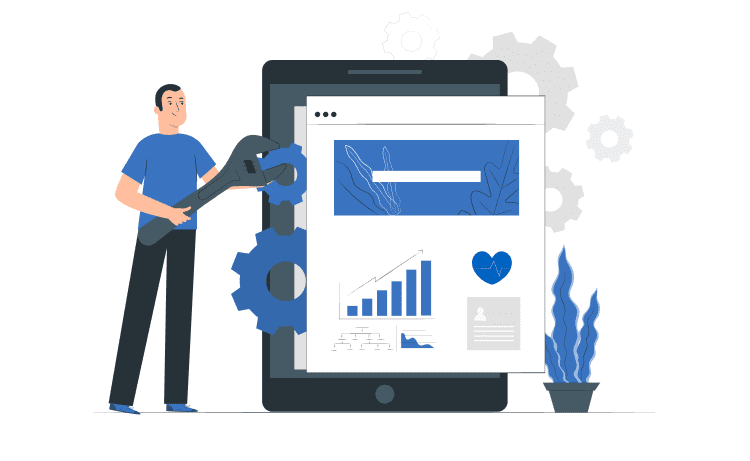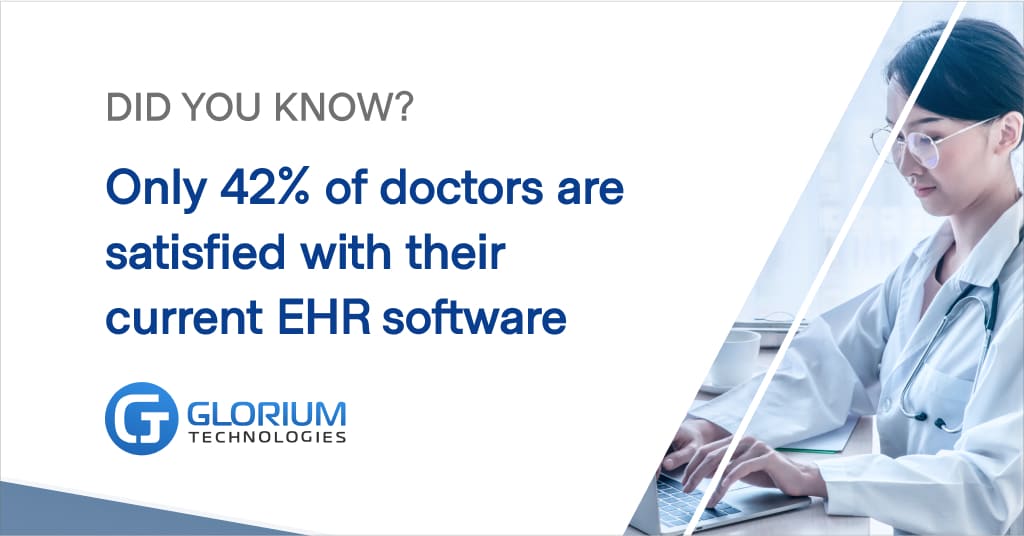
Key Components of an Integrated EHR & Electronic Medical Billing System



Over the last few decades, the healthcare industry in the US has gone through many transformations. As it stands, digitalization throughout the healthcare industry is estimated to reach $379 billion dollars by 2024.
As such, the transition from paper to electronic medical records via healthcare data integration has become standard procedure among most healthcare institutions.
As technology and innovation evolve, so too have electronic medical record systems thanks to revolutionary features dedicated to enhancing the lives of both patients and practitioners.
This evolution of technology has sped up admin processes, improved patient care, and increased the marketability of healthcare products.
The numbers don’t lie: since 2008, the basic EHR adoption rate increased from 9.4% to 83.8%; and the adoption rate of certified EHR jumped from 71.9% in 2011, to a staggering 96% by 2015.
Presently, almost all hospitals and medical institutions are using electronic health records and medical billing software.
Despite widespread adoption, there are still many integration challenges when it comes to patients and medical staff actually using this type of software.
For this reason, when designing a medical billing system, healthcare software providers should take special care when developing specific features in order to enhance and improve the ease of integration, and therefore, increase the marketability of their product.
Content
Electronic health and medical record software consist of centralized data hubs that store all essential patient information, including health records, visits, immunizations, medications, doctor’s notes, etc.
For medical software developers, it is crucial to understand the following essential functions outlined by the Institute of Medicine surrounding Data Standards for Patient Safety (IOM) for the certification of EMR solutions, including:
Throughout the evolution of healthcare solutions, although there have been plenty of new and improved features, the core functions and principles have remained unchanged.
The main issue is that the majority of software solutions currently on the market don’t function as users expect them to. This has left open a wide area for improvement.
Statistically speaking, roughly 42% of doctors and medical personnel report being satisfied with their current EHR software.
The global pandemic that we find ourselves in combined with the intensified digitalization of the healthcare industry, has left us with a growing need for refined, integrated, secure, and high-performing EHR and billing software.
A key feature that needs to be considered when creating EHR software is the ability to customize the application itself to some degree. Due to the immense variety of record types, a combination of pre-programmed templates along with the ability for users to create and customize their own unique templates is a great way to increase user satisfaction.
A more tailored and detailed approach to creating medical records will also significantly increase workflow efficiency and allow you to target a larger audience.
Medical record software wouldn’t be of much use without the capacity to easily integrate with other billing solutions typically found in laboratories, pharmacies, and other medical institutions.
In this case, integration refers to results and/or images from a third-party being automatically transmitted and stored in a patient’s health record.
Thanks to this level of integration, healthcare application users (in this case, doctors) will no longer have to manually enter every new lab analysis or MRI image by hand.
The following is a basic list of results that EHR solutions can manage via integration with other systems:
Real-time eligibility (RTE) is a type of patient eligibility technology and is an integral part of all medical billing and EHR software.
RTE digitally verifies a patient’s insurance coverage in real-time, to determine whether the insurance provider is operating legally, if the insurance is expired, and what services the insurance covers, including:

Often, the patient-side of an application is overlooked by healthcare solution developers. The importance of setting up a clean, safe, and functional patient portal cannot be overstated as it eliminates bottlenecks commonly found in healthcare services, reduces manual and administrative tasks, and drives trust and credibility in a medical institution.
To increase user-friendliness, consider an AI-based support center, complete with chatbots or voice assistants so that users can get answers to questions quickly and easily.
For health services that are tightly connected with pharmaceutical organizations, the ability to prescribe and request medication is paramount — most doctors and patients will be looking for this feature.
Not only does it reduce the burdensome process of filling out manual prescriptions, but it also increases treatment safety and compliance. Digital order management features typically include the following:
When various drugs are administered to a patient, software solutions can be used to identify if and which components could potentially interfere with each other. As a result, automatic notification complete with medical and prescription advice can be delivered to patients.
As medical institutions require a regulated and refined flow of revenue, essentially, they are considered a type of business. Medical billing systems manage this aspect. Billing software often consists of a large ecosystem that is integrated with an EHR solution.
Billing is a vital part of healthcare services, and having a capable system to manage claim submissions, track medical billing codes, and provide reporting can significantly boost a medical practice’s efficiency.
Sophisticated billing software automates payment documentation and coding, bringing speed to financial operations and reducing tedious manual tasks.
A primary feature of medical billing software should be a flexible and responsive, integrative interface, that enables financial operations to be immediately streamlined in an EHR system.
Without the capacity to easily integrate with an EHR system, the billing process will be much more complex — that’s the opposite of what it’s supposed to do.
HCPCS (Healthcare Common Procedure Coding System) or CPT (Current Procedural Terminology) are standard categorization codes used in medical billing that play a vital role in the billing process.
Here’s how they work: a specific code is assigned to each service a clinician provides; this way a billing system is able to track and process the assigned code to determine the amount of payment due.
These codes are also used by health insurers to calculate the amount of reimbursement that a doctor is owed from a practice. According to the CMS (Center for Medicare and Medicaid Services), medical coding errors resulted in nearly $16.73 billion of inaccurate payments in 2019.
With so much at stake, it is essential that medical billing software provides a compliant, accurate list of code and is equipped with the ability to automatically assign and process code within the system.
One of the most critical features of medical billing software is the ability to track and process medical claims.
Medical billing software handles submissions, sends alerts in the case of claim denial, sends billing information to rendered parties, handles claim reconciliation, and much more.
This crucial feature should also include the identification of inaccurately assigned code, preferably with an automated response to the issue.
All reliable medical billing software needs to have robust scheduling capabilities to simplify the communication process between clinicians and patients.
Having a record of all appointments stored in an easy-to-use interface allows clinicians and patients to keep track of their appointment history and doctor’s notes.
This feature also allows users to set reminders, follow-ups, and alerts regarding the arrival of lab results and even suggests scheduling appointments based on prior history.
Having access to patient data that is connected to billing history provides an opportunity for robust financial reporting.
Through intelligent analytics, EHR software is capable of compiling patient data and real-time financial reports to provide insight and recommendations on how to improve the overall patient experience.
By combining integrity with flexibility and security, medical software significantly enhances the quality of patient care, generates more revenue for medical organizations, and reinforces healthcare workflows.
When designed with reliable and in-demand features and components, EHR systems and/or medical billing software become an extremely useful tool for both clinicians and patients.
| Cookie | Duration | Description |
|---|---|---|
| cookielawinfo-checkbox-analytics | 11 months | This cookie is set by GDPR Cookie Consent plugin. The cookie is used to store the user consent for the cookies in the category "Analytics". |
| cookielawinfo-checkbox-functional | 11 months | The cookie is set by GDPR cookie consent to record the user consent for the cookies in the category "Functional". |
| cookielawinfo-checkbox-necessary | 11 months | This cookie is set by GDPR Cookie Consent plugin. The cookies is used to store the user consent for the cookies in the category "Necessary". |
| cookielawinfo-checkbox-others | 11 months | This cookie is set by GDPR Cookie Consent plugin. The cookie is used to store the user consent for the cookies in the category "Other. |
| cookielawinfo-checkbox-performance | 11 months | This cookie is set by GDPR Cookie Consent plugin. The cookie is used to store the user consent for the cookies in the category "Performance". |
| viewed_cookie_policy | 11 months | The cookie is set by the GDPR Cookie Consent plugin and is used to store whether or not user has consented to the use of cookies. It does not store any personal data. |